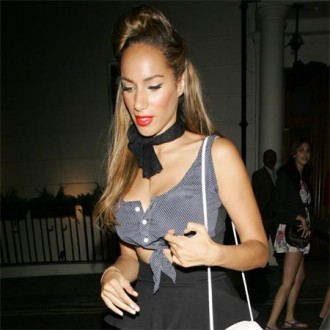When Amy Schumer wound us up about our obsession with oversized tushes in the 2015 parody track “Milk Milk Lemonade,” she wasn’t (entirely) kidding. Last year in Canada, Google searches that included the word “butt” (and similar descriptors) outpaced those of 2004 by 89 percent.
Along with #belfie (butt selfie), #sidebutt and #underbutt are the newest hashtags to go along with showing off your sculpted rear — that rear you probably achieved in your gym’s glute-specific workout class (or from which you smoothed away some cellulite in a bum facial at the spa). And let’s be real: Can you remember the last time you saw a pop star perform in anything but a derrière-emphasizing bodysuit?
READ MORE: Why your 20s is the best time to commit to a fitness routine
Experts agree that we can thank Jennifer Lopez for this rise in fascination with the behind. Research shows that the more media you take in, the more likely you are to want to emulate that “I haven’t eaten carbs in years” beauty standard. So when Lopez wore THAT Versace dress to the 2000 Grammys, the masses—who were used to the ’90s reign of the waif—had a new, curvier muse. Fifteen years later, such inspo is everywhere: See Kim Kardashian, Beyoncé, Nicki Minaj et al.
Of course, celebrating our rear ends isn’t entirely new—just ask rapper Sir Mix-A-Lot. Many cultures have long bowed down to the fuller figure, crowning a big booty as the ultimate in femininity. “In black and Hispanic cultures, having a tiny waist, large hips and a large butt is seen as attractive,” says Dionne Stephens, an associate professor of psychology at Florida International University who specializes in sex in pop culture. “But it was really framed [by society] as highly sexualized and problematic. JLo was the first to make it okay.”
READ MORE: 8 Instagram accounts that inspire us to eat better
Personal trainer Lyzabeth Lopez can relate. Lopez, who is part Latino, used to go hungry in order to get lean. “Before, there was this one ideal,” she says. Now, she teaches women how to make the most of their figures. Stephens agrees that pop culture’s acceptance of a hyper-curvy bottom has helped us feel better about this part of our bodies. “But until we start accepting different sizes and being realistic with proportions,” she says – for example, someone with a bigger bum may be bigger all over and that’s okay – “we haven’t hit a place of acceptability.” The first step: loving every part of our bodies — no ifs, ands or butts.
READ MORE:
12 immune-boosting superfoods you need to add to your diet this winter
4 personal trainers you need to follow on Instagram
Is there an exercise pill in our future?






